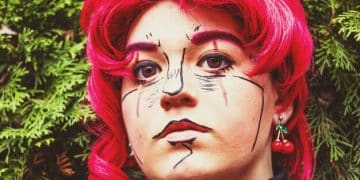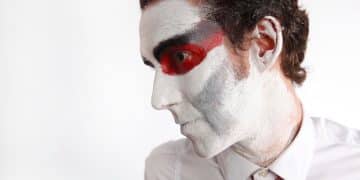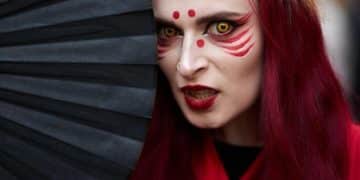Creating Realistic Cosplay Blood and Gore Effects: A Step-by-Step Tutorial
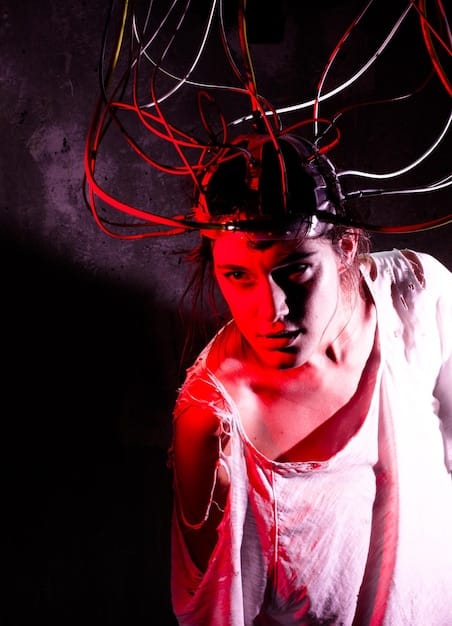
Creating realistic cosplay blood and gore effects involves using various techniques and materials to achieve believable and visually striking results, enhancing the overall impact of your costume and performance.
Want to elevate your cosplay with stunningly realistic blood and gore effects? This comprehensive guide provides a step-by-step tutorial on creating realistic cosplay blood and gore effects that will truly impress.
Understanding the Basics of Cosplay Blood and Gore
Creating convincing blood and gore for cosplay doesn’t require professional makeup artist skills. With the right materials and techniques, you can achieve impressive effects that enhance your character’s story and visual impact. This section will break down the fundamental aspects of creating believable blood and gore.
The Importance of Color and Consistency
Realistic blood isn’t just a uniform red; it’s a complex fluid with varying shades and consistencies depending on the context. Fresh blood is typically bright red, while older, dried blood is darker with brownish or even blackish tones. The consistency also matters – consider whether the blood is fresh, congealed, or mixed with other substances.
Safety First: Material Considerations
When working with fake blood and gore, prioritize safety. Ensure that all materials are non-toxic and skin-safe. Avoid using harsh chemicals or dyes that can cause irritation or allergic reactions. Always test a small area of your skin before applying any product extensively.
- ✅ Use food-grade ingredients like corn syrup and food coloring for a safe base.
- ✅ Opt for non-toxic paints and dyes specifically designed for theatrical use.
- ✅ Avoid using permanent dyes or harsh chemicals that can damage your skin or costume.
- ✅ Always perform a patch test to check for allergic reactions.
In conclusion, mastering the basics of cosplay blood and gore involves understanding color variations, consistency, and, most importantly, prioritizing safety by using non-toxic and skin-safe materials. By paying attention to these details, you can create realistic and impactful effects that greatly enhance your cosplay.
Gathering Your Supplies: A Comprehensive Checklist
Before diving into the creation process, it’s essential to gather all the necessary supplies. Having everything on hand will streamline your workflow and ensure that you can achieve the desired effects without interruptions. This section outlines a comprehensive checklist of materials you need.
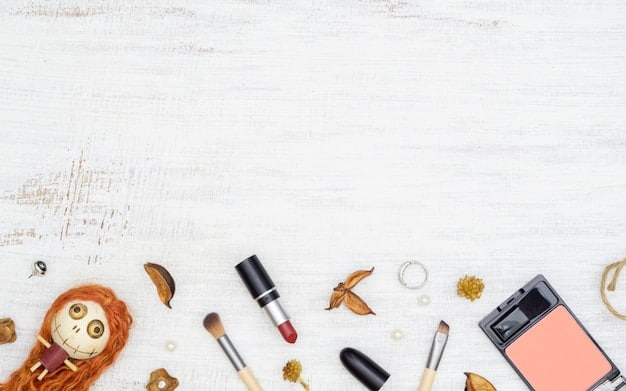
Ingredients for Fake Blood
The foundation of any good blood effect lies in the ingredients used to create the fake blood itself. The most common and effective recipe involves a combination of:
- ✅ Corn syrup (for thickness and texture)
- ✅ Red food coloring (for the primary color)
- ✅ Blue or green food coloring (to deepen the red and add realism)
- ✅ Cocoa powder (for a more realistic, less artificial color)
Tools and Application Materials
In addition to the ingredients, you’ll need a variety of tools and application materials to create and apply the blood and gore effectively:
- ✅ Mixing bowls and spoons
- ✅ Makeup sponges and brushes
- ✅ Syringes or droppers (for controlled application)
- ✅ Paper towels or wipes (for cleanup)
To conclude, preparing your supplies meticulously is crucial for successful cosplay blood and gore effects. By having all ingredients and tools readily available, you can ensure a smooth and efficient creation process, leading to more realistic and impactful results.
Creating Different Types of Cosplay Blood
Not all blood is the same; different scenarios require different types of blood effects. Whether you need fresh, flowing blood or thick, congealed blood, understanding how to create these variations is key to adding realism to your cosplay. This section provides recipes and techniques for creating different types of cosplay blood.
Fresh, Flowing Blood Recipe
For a fresh blood effect that looks like it’s actively flowing, use the following recipe:
- Mix 1 cup of corn syrup with red food coloring until you achieve a vibrant red color.
- Add a drop or two of blue or green food coloring to deepen the red and make it look less artificial.
- Thin the mixture with a small amount of water or glycerin to achieve the desired consistency.
Congealed, Dried Blood Recipe
Creating a more realistic congealed blood is essential. Follow these steps in order:
- Mix 1/2 cup of corn syrup with red and a touch of brown food coloring.
- Add cocoa powder until you reach a thick, pasty consistency.
- For a more textured effect, mix in a small amount of petroleum jelly.
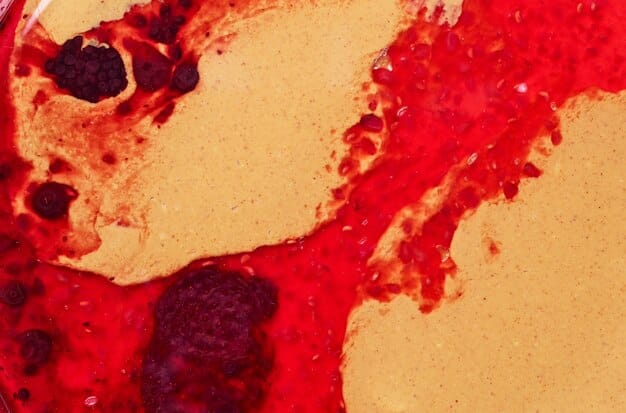
In summary, the ability to create different types of cosplay blood is crucial for achieving realistic and impactful effects. By mastering both fresh, flowing blood and congealed, dried blood recipes, you can effectively customize your gore to suit any scenario and enhance the overall visual storytelling of your cosplay.
Applying Blood Effects: Techniques and Tips
The application of blood effects is just as important as creating the blood itself. Proper application techniques can dramatically enhance the realism and impact of your cosplay. This section will cover various methods for applying blood effects, along with essential tips to avoid common mistakes.
Splatter Effects
Splatter effects are perfect for creating a sense of action and impact. Here’s how to achieve them:
- Load a brush or toothbrush with your fake blood mixture.
- Flick the bristles towards the desired area to create a splatter pattern.
- Vary the intensity and angle for a more natural look.
Dripping Effects
Dripping effects add a sense of drama and realism, especially for wounds and injuries:
- Use a syringe or dropper to apply small amounts of fake blood to the desired area.
- Allow the blood to naturally drip down, creating a realistic streaking effect.
- Control the amount of blood to prevent it from looking too artificial.
Applying blood effects skillfully requires careful attention to detail and a nuanced approach. By mastering techniques like splatter and dripping, and by heeding tips on controlled application and layering, you can create incredibly realistic gore that significantly enhances your cosplay’s visual impact.
Creating Realistic Gore Effects
Beyond blood, incorporating gore effects can take your cosplay to the next level. This involves creating realistic-looking wounds, gashes, and exposed tissues. This section will explore how to make and apply various gore effects to complement your blood work.
Simulating Open Wounds
Open wounds can be simulated using various techniques and materials:
- ✅ Liquid latex and tissue paper: Layer liquid latex and tissue paper to build up the shape of the wound.
- ✅ Modeling clay: Use modeling clay to create raised edges and textures.
Adding Depth and Dimension
Once the basic structure of the wound is in place, add depth and dimension using:
- ✅ Darker shades of makeup: Apply darker shades to the inner areas of the wound to create shadows.
- ✅ Fake blood and gore: Fill the wound with fake blood and gore to enhance the realism.
Creating realistic gore effects requires a combination of artistry, creativity, and attention to detail. By following the guidelines on materials, techniques for simulating wounds, and tips for adding depth, you can create truly terrifying and believable gore effects that enhance your cosplay.
Safety and Cleanup Considerations
While creating realistic blood and gore effects is exciting, it’s crucial to prioritize safety and ensure proper cleanup. This section will cover essential safety precautions and cleanup methods to protect yourself, your costume, and your surroundings.
Safety Precautions
Before you start, here are some important safety measures:
- ✅ Always use non-toxic and skin-safe materials.
- ✅ Perform a patch test before applying products extensively.
- ✅ Protect your eyes with safety glasses or goggles.
Cleaning Up After Cosplay
Proper cleanup is essential to prevent staining and damage:
- Remove fake blood and gore from your skin with gentle soap and water.
- Use makeup remover wipes to clean your face and body.
- Launder your costume items separately to avoid staining other clothes.
Conclusion
Creating realistic cosplay blood and gore effects can significantly enhance the visual impact of your costume and performance. By following the step-by-step tutorials and safety guidelines outlined in this guide, you can achieve professional-quality effects that will truly impress. Remember to always prioritize safety, use high-quality materials, and let your creativity run wild.
| Key Point | Brief Description |
|---|---|
| 🩸 Realistic Blood | Use corn syrup, food coloring (red with blue/green), and cocoa powder for depth. |
| 🩹 Wound Simulation | Create open wounds using liquid latex, tissue paper, and modeling clay. |
| 🎨 Application | Use splatter and dripping techniques for dynamic and realistic effects. |
| ⚠️ Safety First | Ensure materials are non-toxic, do a patch test, and protect your eyes during application. |
FAQ
▼
The best ingredients for fake blood include corn syrup for thickness, red food coloring for the base color, blue or green food coloring to deepen the red, and cocoa powder for a more realistic hue.
▼
To make fake blood look more realistic, add subtle variations in color with blue or green food coloring and use cocoa powder to tone down the artificial brightness. Also, consider the texture by adding thickening agents or thinning it with water.
▼
Key safety precautions include using non-toxic, skin-safe materials, performing a patch test before applying extensively, and 보호 your eyes with safety glasses or goggles to prevent irritation or allergic reactions during application.
▼
To create a congealed blood effect, mix corn syrup with red and brown food coloring, then add cocoa powder for thickness. For added texture, mix in a small amount of petroleum jelly to simulate clotted blood.
▼
To clean fake blood off your skin, use gentle soap and water, followed by makeup remover wipes for any lingering residue. Wash your costume separately to prevent staining other clothes, and pre-treat any stubborn stains.
Conclusion
Mastering cosplay blood and gore effects is an art that significantly enhances your character’s presentation. By combining the right materials, techniques, and a keen eye for detail, you can create compelling visuals that captivate and leave a lasting impression. Always prioritize safety and let your imagination guide you to craft truly unforgettable cosplays.
